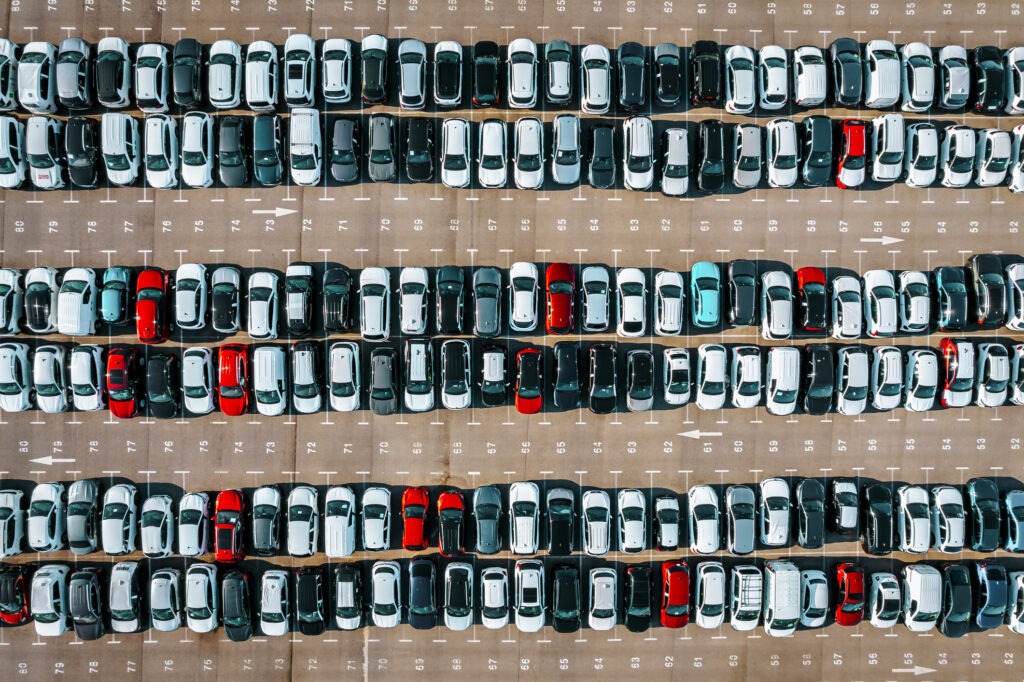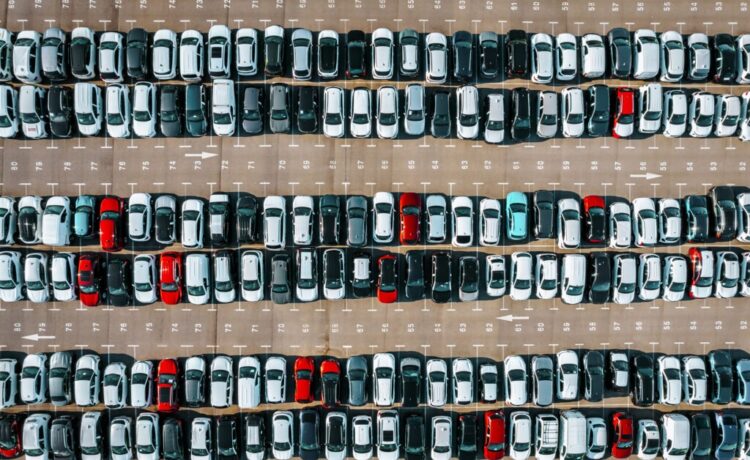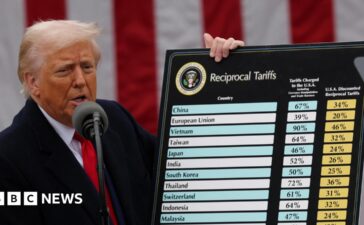03 April 2024

In one of the most unstable periods seen since mid-2022, three of the EU’s biggest new-car markets posted delivery declines last month. Autovista24 special content editor Phil Curry explores the figures.
New-car markets in France, Italy and Spain struggled each posted declines in March. There were mixed results across all powertrains, with internal-combustion engine (ICE) deliveries dropping significantly in France and Spain.
The early Easter break impacted some deliveries, with two fewer working days in March. However, the diversification of registrations by powertrains is continuing, causing issues for some technologies as buyers explore their options.
Additionally, the slow uptake of electric vehicles (EVs) in Italy and Spain persisted, causing further concerns over decarbonisation plans. Overall, March 2024 was one of the most difficult months for new-car markets since the supply-chain crisis began to ease.
French ICE market falls
In March, French new-car registrations declined by 1.5% year on year. A total of 180,024 units were delivered to customers according to Autovista24 calculations based on powertrain performance.
Figures released by the PFA suggest a collapse in the country’s ICE market was to blame for the poor result. While registrations trended downwards in January and February, March highlighted the fragility of the market. This looks to be the outcome of the country’s move towards electrification.
Petrol models saw registrations decrease by 17.7% in the month, with 58,865 units registered. Diesel fared even worse, with 13,532 units in the month equating to a 31.9% drop. This means ICE deliveries fell by 20.8% overall.
While some markets combine mild hybrids (MHEVs) into either corresponding ICE categories or the full-hybrid (HEV) segment, France records these deliveries separately. Even though MHEV registrations rose 26.1% in March, this was not enough to offset the ICE decline.
Petrol took a 32.7% market share in March, down by 6.4 percentage points (pp) compared to the same month last year. Diesel’s share fell from 10.9% in 2023 to 7.5% last month. This means ICE’s domination of the market, at 50% a year ago, has ended. Combined, the fuels held 40.2% of the French new-car market in March.
In the year to date, petrol deliveries declined 8.2%, while diesel was down 29.2%. This means a combined drop of 12.9% across the first three months of the year, confirming a shift in consumer choice.
EV boost despite changes
The electric transition is being spearheaded by battery-electric vehicles (BEVs), which were the second-largest powertrain by volume in March. A total of 33,941 units were registered, up by 10.8% year on year, capturing 18.9% of the market. This is up by 2.1pp, the best year-to-date performance for the powertrain.
The market does not appear to have been impacted by changes to subsidies, which removed models made outside Europe from the eligibility list. This meant that popular models such as the Dacia Spring, MG4 and Tesla Model 3 are no longer subsidised by the government.
Plug-in hybrids (PHEVs) also improved, albeit by a smaller amount. A total of 16,291 units took to French roads in March, just 569 units more than last year. This equated to a year-on-year increase of 3.6%, and a market share of 9%. HEVs saw the biggest rise in France during March. The powertrain was up 32.3%, with deliveries totalling 28,708 units.
Across the first three months of the year, BEV registrations increased by 23%. This resulted in a market share of 17.9%, up 2.5pp on the first quarter of 2023. PHEV registrations grew by 5.6%, although their market share remained stable at 8.7%. HEVs saw deliveries climb by 28.4% between January and March, accounting for 16.5% of the overall market.
Hybrid honours in Italy
The latest data from ANFIA shows the country’s new-car market shrunk by 3.7% in March. Severe declines in the EV market were partially responsible for this drop. ANFIA also highlighted that the early Easter period meant two fewer working days in the month.
Unlike other markets, Italy saw its petrol registrations increase in March. A total of 50,765 units powered by petrol took to the road, up by 5.7%. In the year-to-date, the fuel was up by 20% and shows no sign of slowing down.
However, the ICE share is being eroded by the performance of diesel. The fuel declined by 27.6% in the month, as 24,401 units took to the country’s roads, over 9,300 deliveries less than one year ago. Overall, the market fell by 17.4% in the first three months of 2024.
So, while petrol increased its market share to 31.3% in the month (up from 28.6% in March 2023), the diesel share dropped by 4.9pp to 15.1%. This meant that ICE vehicles held 46.4% of the market in the month, down by 2.2pp.
Hybrids, including MHEVs and HEVs, remained the dominant powertrain in the country and saw improved deliveries. A 38.8% market share equated to 62,798 units, up by 8.3% year on year. Across the first quarter, hybrids have improved by 12.6% with a 38.2% market share.
This performance highlights that Italy is a hybrid-dominant market. Drivers appear to prefer the improved fuel economy and green benefits, while keeping the range that internal-combustion engines offer.
BEV delivery downfall
While one electrified technology dominated others struggled. BEVs posted the biggest decrease in March, with just 5,357 units down by 34.4% year on year. The all-electric powertrain’s market share was just 3.3% in the month, down 1.6pp.
PHEVs also struggled, with deliveries down 22.1% to 5,668 units, and a 3.5% market share. Combined, EV deliveries dropped by 28.6% as the country’s struggles with the technology continued.
However, there are some signs of positivity on the horizon. Efforts to improve Italy’s charging infrastructure, which could lead to more EV registrations, are ongoing. The Single National Platform (PUN) has been established to map the country’s existing network. It is promoted by the Ministry of the Environment and Energy Security and realised in collaboration with the Gestore dei Servizi Energetici (GSE) and Ricerca sul Sistema Energetico (RSE).
The PUN allows drivers to see information on charging locations, type of power supply, maximum power supply and recharging point status. It will also allow local authorities to plan the installation of new points.
However, ANFIA acknowledges that incentives are also needed to boost BEV deliveries, and a new scheme needs to be implemented quickly to prevent further declines in the Italian market.
Growth ends in Spain
The Spanish market dropped by 4.7% in March, according to figures from ANFAC. This is the first drop in passenger-car registrations since December 2022, ending a run of 14 consecutive months of growth. The authority has stated that the decline is due to the early Easter this year.
‘We will have to wait until April to see if we continue on an upward path or not this year,’ commented Félix García, director of communication and marketing at ANFAC. ‘We are concerned about the drop of more than 27% in company purchases, given that these are an indicator of how the economy is doing.
‘But we are more concerned about the sales of electrified vehicles. We are still very far from achieving our decarbonisation objectives, both in sales of this type of vehicle and in charging facilities,’ García added.
Only two powertrains, HEVs and others, experienced growth in March. The country’s complicated relationship with EVs continued, while petrol and diesel models also fell.
Disappointing EV demand
Spain has struggled to attract buyers to EVs. According to Autovista24’s powertrain calculations, in March, just 4,201 BEVs were registered, a decline of 2.7% over the previous month last year. The technology’s market share sat at 4.4% in the month, a rise of just 0.1pp.
Across the first three months of the year, 11,380 BEVs have been registered, a 6.6% increase. However, this total is low compared to other European markets. In comparison, France saw 79,782 BEV registrations in the first quarter.
PHEVs also struggled in Spain last month, with 5,558 registrations equating to a 6.6% drop against the third month of 2023. Looking at market share, the powertrain also dropped 0.1pp last month, accounting for 5.9% of the market.
While these drops seem significant, they are based on very low totals. The difference in BEV units between March 2023 and this year was just 118 units, while PHEVs dropped by 394 units.
However, apart from the ‘other’ category which includes liquified petroleum gas (LPG) and compressed natural gas (CNG), BEVs recorded the smallest amount of registrations in March, with almost half the deliveries of diesel.
‘The start of the year confirms our forecasts regarding the registration of EVs, which, far from advancing, is going backwards,’ added Raúl Morales, communication director of dealer body FACONAUTO. ‘So far this year, their contribution to the market does not reach 11% of total registrations compared to the 12% they finished with last year.
‘A reaction is necessary in the form of significant measures that the sector has been demanding from the government so that our country does not fall further behind in the electrification of the parc, and so that we can aspire to meet the decarbonisation objectives that come to us from the European Union,’ Morales added.
ICE freezes in March
ICE models also struggled. Petrol registrations declined by 10.2% in March, although the powertrain still accounted for 42.6% of the market. Diesel deliveries were down by 38% compared to last year, taking a market share of 9.1%. However, ICE still dominated the market, with a combined share of 51.7%.
This total share is still down by 7.4pp compared to March 2023. EVs remained stable at a 10.3% share in the month, as HEVs took most of the share away from petrol and diesel.
The electrified drivetrain increased deliveries by 17.9% in the month, with 33,905 units delivered.
It is becoming Spain’s answer to reducing the country’s air pollution levels. Yet the technology is not the complete solution. More is required to drive customers into zero-emission models in the coming months and years ahead.
















